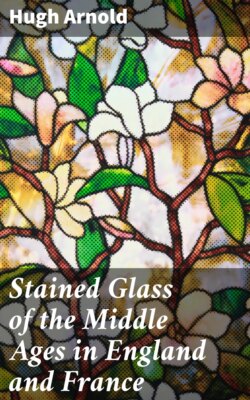Читать книгу Stained Glass of the Middle Ages in England and France - Hugh Arnold - Страница 3
PREFACE
ОглавлениеThe Cathedral verger, conducting his flock of tourists round the building, while giving them plenty of really interesting and valuable information about it (for the verger of to-day is a different man from his predecessor, and is often very intelligent and well informed), remarks briefly, "The glass is of the thirteenth century"—or fourteenth or fifteenth, as the case may be; the procession gazes carelessly at it, and passes on. Yet from out of that dazzling and glowing labyrinth of coloured jewels a past age is speaking far more articulately, if one stops to unravel the message, than ever in stone or wood, and it is for those who can be induced to take that second look which will be followed by a third and a fourth and many more that I have written this book.
It is impossible in a book of this size to give an adequate review of all the important windows even within the limits of place and time which I have set myself. I have therefore chosen for study certain typical windows in each century, and have written about them some of the things which interest me and which, I hope, will interest others.
The work of the countries and period I have chosen is of course the most important of all. There is beauty, it is true, in much Renaissance work (only a prig could resist the gaiety and charm of the windows of St. Vincent at Rouen), but it is for the most part beauty achieved in spite of, and not through, the material. There is beautiful mediæval work in Germany and Italy, but the Germans, till the Renaissance, clung to a rather lifeless and archaic convention, and the Italians were hampered by their greater knowledge of painting. The art has found its noblest expression in the work of the great school which for nearly the whole of the Middle Ages was common to France and England.
There is especial reason why we English should study the work of our own mediæval glass painters. They are the chief representatives of our primitive school of painting. It is true that there are English manuscripts in the museums, and there are the painted rood screens of Norfolk, including the superb example at Ranworth, and there is the portrait of Richard II. at Westminster; but of the painting which must once have covered the walls of our churches, there is little left but patches of faded colour clinging here and there to the plaster, and the occasional dim outline of a figure. Of our glass, on the other hand, in spite of four hundred years of destruction, a considerable quantity remains, and is worth far closer study than it has ever had.
I must gratefully acknowledge the help I have had from my brother, Mr. T. K. Arnold, especially in writing of the Canterbury glass of which he has made a very close study. My thanks are also due to Mr. Noel Heaton for information on the chemical composition of glass.
The publishers are fortunate in having been able to reproduce, for the illustrations, the very beautiful coloured drawings of Mr. Lawrence B. Saint, which are now in the Victoria and Albert Museum.
H. A.
